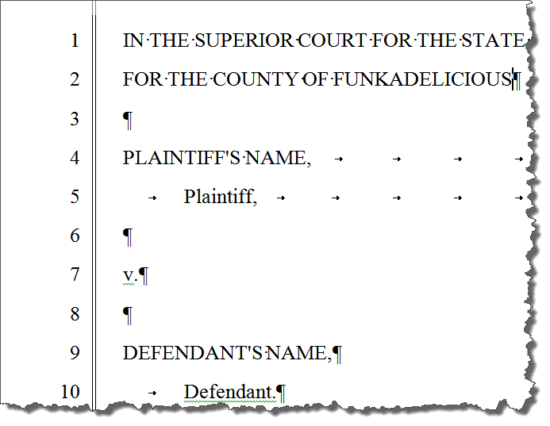Pleading Paper Course
Learn how to deal with this special format

If there’s one plea I’ve gotten more than any other from readers, it’s for help with Pleading Paper!
“My text never quite lines up exactly with the numbers on the pleading paper. What’s the trick??”
“PLEASE work on the pleadings template! I’m sure I and many others would pay bonuses for your guidance.”
“Pleading paper instructions would be fantastic! I mostly work in California state and federal courts, and … while I’d love to be able to start [templates] from scratch I don’t know how. Any help you could give would be terrific, thank you!!”
“I wish WORD was like WordPerfect in that we could just add the pleading format into the document after the document is completed. Anyway, if you could help me figure this out it would be great.”
There’s good news … and better news
The good news is, I’ve heard your pleas and have put together a two-part tutorial, complete with video and text/screenshot instruction, on how to find, use, and modify pleading paper templates.
In the course, I not only show you the different types of pleading paper templates (there are two basic types that are very different from one another), but also how to work with them and even modify them to make them your own. I even show you the trick for keeping your text and the numbering in perfect sync!
Lesson #1 of the course even provides you with links to download the following templates (some of which are no longer available on Microsoft’s site):
- 24-line template
- 25-line template
- 26-line template
- The old 28-line template
- The 2013 28-line template
- The 32-line template
This course is for those who want to learn how to use and, if necessary, modify the existing standard templates and for those who want to create their own for future use.
Yes, I need some help with Pleading Paper
Get the skills you need to deal with this frustrating word processing format
For those of you in California and other states whose courts require pleading paper form (line numbering down the left side). Here’s what’s covered in the course:
The two types of pleading paper format (very different structures)
Links to multiple templates, including ones Microsoft has discontinued
How to fix lines that get out of sync with the line numbering
Modifying the standard templates to fit your court’s requirements
Ensuring your lines appear on every page (not just the first)
Extending line numbering into the header and/or footer (and which templates are capable of each)
The best source for guidance on your court’s requirements (no, it’s not me!)